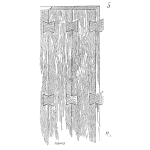
As an industrial statistics consultant for the past 25 years, I have frequently fielded questions related to sample size determination. Unfortunately, I have encountered many instances where simple rules of thumb were used for any purpose (like always use 30). Sample size guidance really depends on what the goal of the study is, the type of data we are dealing with, what statistical method we are using and some other factors as well. Common activities which typically require sample size determination include:
- Hypothesis Testing (including Equivalence Testing)
- Estimation of statistics like means, standard deviations, proportions
- Calculation of Tolerance Intervals (range of data a process uses)
- Designed Experiments (number of replicates)
- Statistical Process Control Charts (e.g. X-bar charts)
- Acceptance Sampling (to disposition lots or batches of raw materials or finished products)
- Reliability Testing to estimate Reliability performance
- Reliability Testing to demonstrate Reliability performance
All these applications require different assumptions and calculations to determine an appropriate sample size. In this article, we focus on Sample Size determination for Hypothesis Testing. It is assumed that the reader is already familiar with Hypothesis Testing.
[Read more…]












